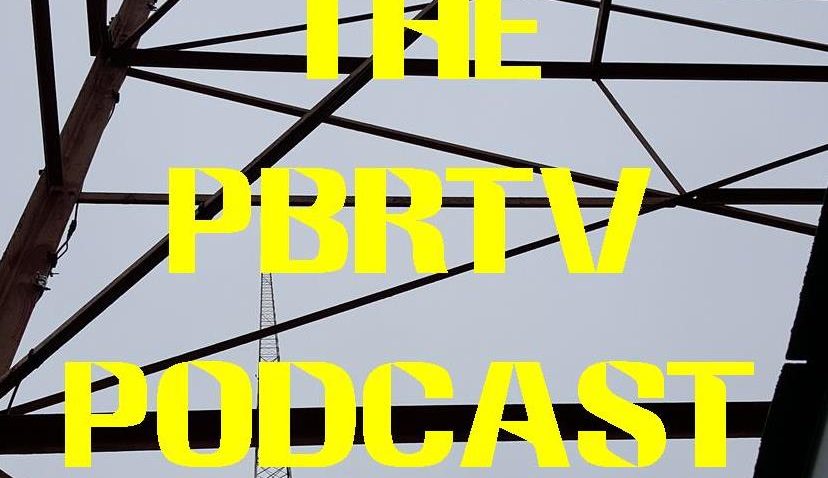Your radio career, 75 years ago
July 20, 2009. . .

The book offers a peek at what grandpa or great-grandpa might have encountered when trying to get a job in the “exciting world of radio.”
Notice that Mr. MMNF says “men” and “grandpa.” Mr. Bouck doesn’t offer any job opportunities for women who might want to work in the “exciting world of radio,” except for ones who, he says, who write for entertainment magazines.
Bouck calls female radio writers “sob sisters who are experts in the reading of souls, and whose facile pens are dipped in pink lemonade.”
(Mr. MMNF knows a few women who would dip Mr. Bouck’s head in pink lemonade if he were alive today, but he digresses.)
. . .

Bouck’s book also provides a useful survey of the radio broadcasting industry before the arrival of FM and TV.
In 1934, there were 600 AM, shortwave and experimental stations in the U.S., according to Bouck.
Though the number of stations grew rapidly following World War II, he didn’t foresee that. In fact, Bouck saw it as “extremely doubtful” that the number of stations would increase, “since we already have about six times as many as is theoretically desirable from the point of view of interference.”
He does predict that the growing influence of radio networks would eventually outshine local stations — which it did until the rise of television in the early 1950s.
“As national programs of the highest quality … become readily available, the utility, necessity and public convenience of the low-power local stations will be lessened,” Bouck says.
. . .

(Editor’s Note: The caption above is incorrect. The band is Borrah Minnevitch and the Harmonica Rascals, the best-known of whom was actor and musician Johnny Puleo, wearing the white shirt and Western “chaps” in the center of the photo. Active until the 1980s, Puleo was a frequent performer at Pittsburgh-area nightclubs like the Twin Coaches and Bill Green’s.)
. . .
In the 1930s, much radio music was still being performed live. “The hunt for new talent is constantly going on,” a spokesman at NBC tells Bouck. “The era of wholesale auditions has passed, but the road is still open for those who really have something to offer.”
Nevertheless, he discourages musicians from trying to break into radio, and is equally scornful of most other performers, including actors. “While high-class entertainment is available at some time during almost any evening,” Bouck says, he describes most programs as “rustic character sketches, domestic life programs, news commentators, stooge dialogues and light opera.”
The job of “disc jockey” hadn’t really been defined in 1934. Instead, on-air jobs were generally confined to “announcing” news or sports.
. . .
And Bouck is almost as dismissive of male radio announcers as he is of women writers. He calls them “neither artisan nor artist” and notes that the waiting list for jobs “looks like a bread line.” (Some things haven’t changed.)
The general requirements for radio announcers in 1934, he says, were “good diction, facile command of English, flawless grammar, a cultural background, a college education or its equivalent, a speaking knowledge of at least two foreign tongues, an excellent voice preferably with unusual qualities, adaptability, tact, a familiarity with the theater and music, and that elusive something called a radio personality.”
Tact? Knowledge of two foreign languages? Flawless grammar? Knowledge of the theater? With requirements like that, there wouldn’t be a single morning radio show in Pittsburgh! (Well, maybe Jim Cunningham‘s on WQED-FM.)
. .
The good news, according to Bouck, was that salaries for top announcers were “excellent.” CBS announcers were being started at “relatively high wages around $50 a week,” he writes, while Graham McNamee (the most famous announcer of the early days of radio) “at times makes over $1,000 a week.”
The lowest weekly salaries in New York City were paid at WOR, Bouck says, where starting wages were $35 per week. (We can think of a few places over in Green Tree where the pay scale hasn’t budged much.)
. . .

What does he like about the radio business? Technical jobs operating radio transmitters — either for broadcast stations or at “ship-to-shore” facilities — and jobs fixing and installing radios.
Indeed, much of Bouck’s book is directed toward the now-lost art of radio repair.
In our era when radios are disposable and usually have no replaceable parts, it’s hard to imagine that someone could be “making a living” by fixing sets.
But in 1934, a starting radio serviceman could expect to make about $30 per week, Bouck says — a little less than $500 per week in 2009 dollars. To move up in the field, technicians had to be willing to start their own shops, he says.
. . .

Bouck recommends several methods for drumming up business, including installation of roof and attic radio antennas and filters to block out electrical noise.
He notes that enterprising repairmen could make a good living by updating older radios with new guts. About 4 million radios were being sold in the United States every year, Bouck writes, but at least 8 million sets then in use were of pre-1931 design.
“By 1933, radio developments had progressed to the extent that these sets were virtually obsolete,” he says. “A modern radio is well-nigh perfect.” (And here you thought your computer or cell phone went out-of-date fast, or that “planned obsolesence” was a new concept!)
Bouck also recommends that radio repairmen branch into other fields, like installing PA systems.
. . .

Bouck cautions his readers that the radio business “no longer offers the glamour and striking opportunities that existed in the pioneer broadcasting days of a decade ago,” adding that “the bonanza days are over.”
But in that regard, he says, the radio (and budding television) industry of the mid-1930s was not unlike other “highly competitive fields” where demand for jobs outstripped the supply.
. . .
“The radio industry … offers greater opportunities to anyone interested in radio than any comparable endeavor,” Bouck says. “This is simply its appeal to versatility … there is a place for the mechanic and the scientist, the writer and the engineer, the extrovert and the introvert.
“Radio has a fascination all its own that lures, intriguing the imagination,” he concludes.
Though the jobs are much harder to find than they were even during the Great Depression, Mr. Monday Morning Nostalgia Fix has a hard time disputing that last statement.

Mr. Monday Morning Nostalgia Fix recently ran across a fascinating little book called “Making a Living in Radio.”
With all of the recent budget cuts, that title can probably be filed now in the “fiction” department of the Carnegie Library. (Rimshot.) (Thanks, make sure to tip your waitress.)
Written in 1934 by Zeh Bouck, an engineer and contributor to Radio News magazine, the book was published by McGraw-Hill and aimed at out-of-work men who were casting about for a career during the Depression.
. . .

After admitting that the job market of the early 1930s was bleak, Bouck reminds his readers that “hundreds of thousands of unemployed today … (will be) making a living in radio in the next decade or two.”
Radio “has suffered its figurative ups and downs,” he writes, “but no one can doubt the solidity” of its future growth.

